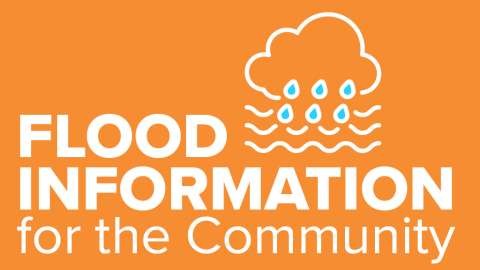Up to almost 100 millimetres of rain is forecast for Shepparton before this weekend. Rivers, creeks and water storages are at, or over, capacity, as we warn Greater Shepparton residents to prepare for possible flooding across the region.

In a flood event, Victoria State Emergency Service is the lead agency, however we have prepared the following information to assist residents to identify and better understand their local flood risk, including information about flood history, how to prepare and respond to floods and who to contact.
Plan and Prepare
1. Know your local flood history
The Greater Shepparton area has a history of flooding including in 1870, 1916, 1974, 1993 and more recently in 2010:
- 1974 was a Goulburn River dominant flood
- 1993 was a Broken River dominant flood
- 2010 was a flood which saw gauges on the Goulburn, Broken and Seven Creeks peak at major level
During this flood, 13 houses and 31 buildings were flooded, 620 houses were isolated and more than 60 people attended the relief and recovery centre.
Floods like this or worse could occur again. Even if your property is not affected by floodwater, you may be impacted indirectly by road closures, isolation and disruption to essential services including telephones, power and sewerage. Flooding from the rivers in this area usually lasts about four to seven days depending on the rainfall. Roads and properties can also flood due to water backing up in the stormwater drain system.
Flash flooding caused by heavy rainfall can also occur in low-lying areas, especially in the industrial and business areas of Mooroopna and Shepparton East and around the Doyle’s Road- Midland Highway roundabout. These flash floods only last a few hours but can be dangerous and cause extensive damage.
The best thing we do as a community is to plan and prepare. Flood guides for Greater Shepparton are located on the SES website.
2. Have an Emergency Plan
Have an Emergency Plan, it takes very little time and may save lives and property. The SES has a step by step guide and a template to help.
Have an emergency kit – make sure you have essential items on hand and the kit is in an easy to grab spot. It should include:
- Radio (battery-powered)
- Torches
- A supply of batteries (multiple sizes)
- Device chargers (solar-powered and standard)
- Mobile phone
- Food – basic staples that don’t require heating or cooling
- Bottled water
- Warm, waterproof clothing and comfortable shoes
- Spare medication, prescriptions
- A first aid kit
- Pet essentials
- Cash and a printed copy of your Emergency Plan (RediPlan)
3. Know What to Do
Set a watch zone on the VicEmergency App, whether at home or at a holiday destination. Know what to do:
- Bag it: Get your sandbags ready and in place to prevent water from entering your property
- Block it: Block drains, toilets, and doorways
- Lift it: Lift your valuables up high
- Leave: Get on your way to a safe destination as soon as possible
Bag it, Block it, Lift it & Leave


Remember, Stay Safe
- Never drive, ride or walk through floodwater
- Never allow children to play in or near floodwater
- If evacuated, do not return until it is safe to do so








